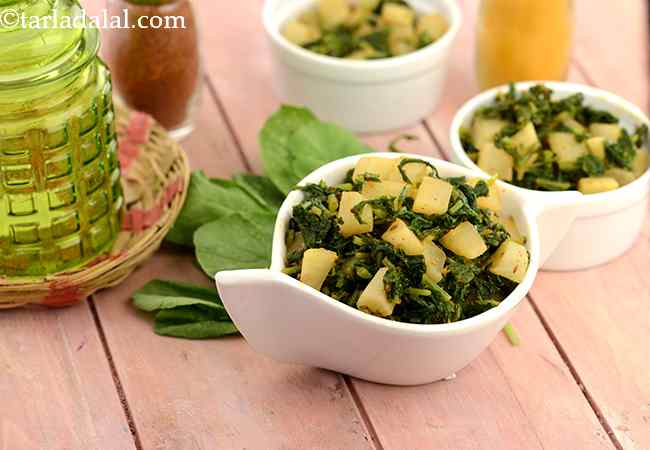160 calories for 1 serving of Papad Mangodi ki Sabzi, Cholesterol 8 mg, Carbohydrates 8g, Protein 4.7g, Fat 11g. Find how much fibre, iron, calcium, zinc, magnesium, phosphorus, sodium, potassium, folic acid is present in Papad Mangodi ki Subzi.
Click here to view Papad Mangodi ki Subzi recipe. Rajasthani papad mangodi ki wadi | traditional Rajasthani sabji | with 34 amazing images.
What a match – moong dal mangodi and urad dal papads! When this wholesome and tasty combo meets tangy curds and an assortment of spice powders, you get a spicy, tongue-tickling papad mangodi ki sabzi.
A simple tempering of mustard and cumin seeds imparts an irresistible aroma to the papad mangodi ki sabzi.
Papad & mangodi are stocked in every household in Rajasthan so making papad mangodi ki sabzi is an easy affair.
Tips for papad mangodi ki sabzi. 1. Add the papad only towards the end as it will soften quickly. 2. Remove from the flame, add the curds mixture.
Is Papad Mangodi ki Sabzi healthy?
No, this is not healthy. Let's see why.
Let's understand the Ingredients.
What's good.
1. Curd + Low fat Curds : Curds help in digestion as it has very good bacteria. Probiotics in curds acts as a mild laxative but, in case of diarrhoea and dysentery, it is a boon, if curd is used with rice.They help in weight reduction, good for your heart and build immunity. The only difference between curds and low fat curds is the fat level. Read the benefits of curds to include in your daily diet.
2. Yellow Moong Dal : yellow moong dal is used in making Mangodi. The fibre (4.1 g in ¼ cup) present in yellow moong dal prevents the deposition of bad cholesterol (LDL) in the arteries which promotes a healthy heart in turn. Packed with nutrients like zinc (1.4 mg), protein (12.2 mg) and iron (1.95 mg), yellow moong dal helps to maintain the elasticity of your skin and help to keep it moist. Fiber, potassium and magnesium from yellow moong dal will work together to regulate blood pressure and soothe the nerves and is diabetic friendly. See here for details of 7 amazing benefits of yellow moong dal.
What's the problem?
Papads : These are not healthy at all. Papad has loads of soda which leads to bloating of the stomach.
Can diabetics, heart patients and over weight individuals have Papad Mangodi ki Subzis?
No, this recipe is not good for diabetics, heart and weight loss. There is papad used in the recipe which leads to bloating of the stomach and digestion issues.
What is a healthier sabzi option ?
Here are some very healthy sabzis like dahi bhindi ki sabzi recipe, mooli ki sabzi recipe, bhindi masala recipe.

Mooli ki Subzi
Can healthy individuals have Papad Mangodi ki Subzis?
No.
How to burn 160 calories that come from Papad Mangodi ki Subzis?
| Walking (6 kmph) = |
48 |
mins |
| Running (11 kmph) = |
16 |
mins |
| Cycling (30 kmph) = |
21 |
mins |
| Swimming (2 kmph) = |
27 |
mins |
|
|
|
Note: These values are approximate and calorie burning differs in each individual.